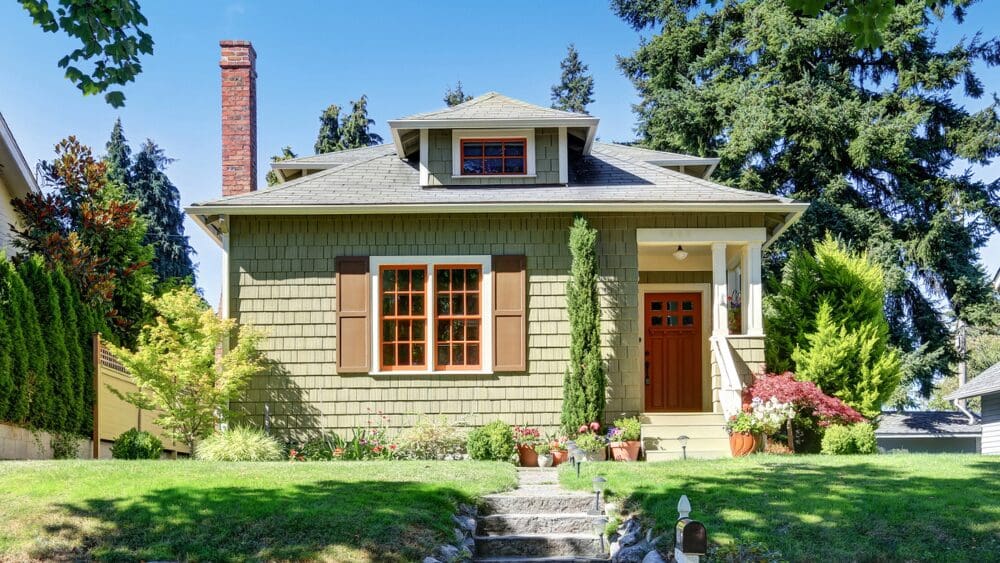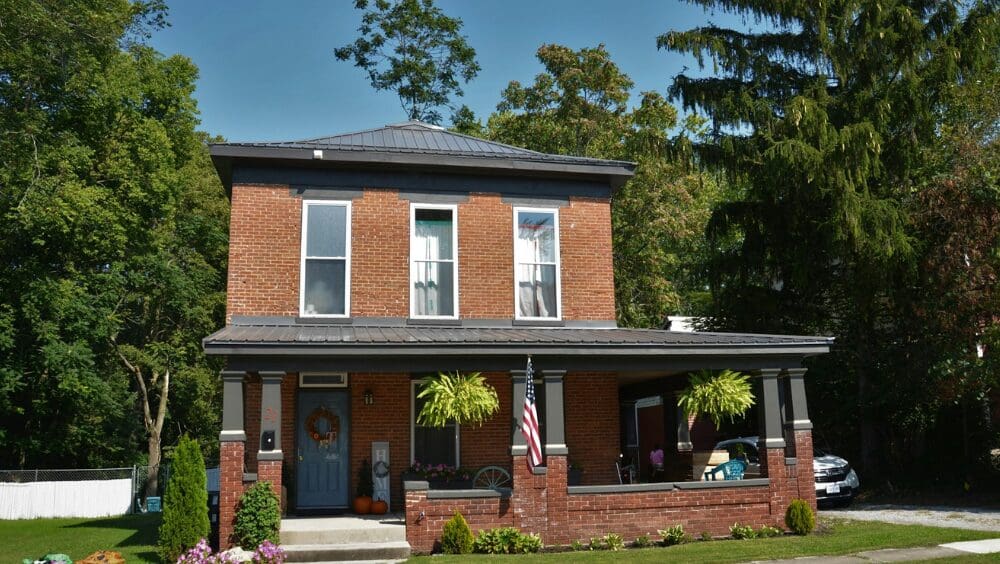
Selling a home “as is” has its perks. First, you save on the cost of sprucing up your home. And ideally, you avoid painful repair negotiations with a buyer down the line. But there’s one major drawback to selling as is: less money in your pocket. Just how much do you stand to lose if you list your home as an as-is sale? A simple equation for calculating how much less you’d net doesn’t exist. So we reached out to the experts — including a top Wisconsin listing agent and several professional homebuyers — to find out what goes through a buyer’s mind when making an offer on an as-is listing. And to give you an idea of how your home might stack up, several of our experts revealed actual dollar figures from past transactions, along with insight about factors that affected their offers. To find out what affects offer prices when selling a house as is, we rounded up this select group of industry pros for insider answers: When selling your house as is, the buyer purchases the home with the understanding that the seller chooses not to make any repairs or improvements. The buyer accepts the property in its present condition (paint scuffs, leaky faucet, and all) without warranty from the seller. “They’re letting the buyer know in advance that there’s no intention of making any changes to the property — not fix things or improve things,” says Batterman. “What you see is what you get,” she adds. This differs from a typical sale, when sellers often make repairs and improvements to their house before listing and selling. That isn’t to say that as-is sellers are off the hook from disclosing known issues about the home. If the homeowner is in a disclosure state and is aware of a material defect that would affect the value or desirability of the home, such as a cracked foundation, the seller would be obligated to disclose that fact. Also, an as-is sale doesn’t preclude the buyer from inspecting the property. Whether you sell as is or not, the buyer has the right to inspect the home (within the terms of the purchase agreement) for potential defects. And if the buyer unearths a material issue not previously disclosed, the buyer may want to renegotiate the price and terms. That’s why Batterman recommends a seller pre-inspection. By having their home inspected before a buyer gets involved, the seller can disclose any defects in advance — and ease buyer hesitation. For buyers, an as-is sale can be scary, says Batterman. “But if they’ve got an inspection report, [buyers] have a really good idea of what they’re going to encounter. So there’s a lot more confidence there.” Sellers typically don’t net the maximum value of their home when selling as is. These are the factors that buyers consider when placing an offer on this type of home sale. You can expect a different offer price when selling as is to someone who wants to live in the home versus an investor profiting from the purchase. Potential buyers who find out a home they’re considering is being sold as is tend to become suspicious, says Batterman. “The buyer has an idea that there’s something more to the story than maybe what they can see.” Batterman goes on to explain that buyers worry about potential issues cropping up down the road, particularly with repairs that could exceed initial contractor estimates. Once upon a time, buyers sought fixers uppers for instant equity by putting in the work themselves. But nowadays, Batterman estimates that 90% (or “even a little more”) of buyers would rather buy a home that’s turnkey and ready to move in. The end result? You limit your buying pool when selling as is. In Batterman’s experience, “oftentimes [buyers] offer you less money than you’re asking for the property, or you’ll have less offers in a seller’s market.” Unlike buyers who plan to live in the home, an investor’s primary motivation when making an offer includes potential profit. As independent businesses, each investor calculates their own risk and profit margin, which impacts the final offer. Long-term versus short-term investor strategies also factor into profit calculations and how much an investor may be willing to pay for an as-is home. “The biggest factor is the real estate investor’s exit strategy,” explains Lambert. “An investor can typically pay more for a property they intend to buy and hold as a rental property than one they intend to fix up and resell.” According to Marino, homeowners can expect to net, depending on the condition of the home, 75% to 95% of the home’s value (after repairs) when selling as is to a cash buying company such as hers. And sellers typically don’t pay for any closing cost or commission fees when selling to a company that specializes in buying homes for cash, she adds. Scenario for selling as is: Cash buyer and investor Finn places an offer on a home that needs $20,000 of work, estimating that the house will sell for $200,000 after making the repairs. Finn also offers to pay for all closing costs. Seller Jones accepts Finn’s offer of $150,000, or 75% of the after repair value (ARV). Scenario for selling after completing repairs: Homeowner Jones spends $20,000 on repairs before selling his home for $200,000. The buyer intends to live in the house after closing. Jones pays for seller closing costs in the amount of $16,000, or 8% of the sales price. Taking into account closing costs and repairs, Jones nets a sales price of $164,000. Jones nets 8.5% less by selling as is to a cash buyer when comparing the two scenarios. The better the condition of your home, the closer you’ll get to market value when selling as is. Conversely, homes in need of major overhaul tend to receive much lower offers because of the time, effort, and upfront cash required to bring the home to a condition that aligns with similar homes in the area. Fulmer offers an investor’s perspective: “We generally try to make more profit on a house that is going to require significant repairs than on a house that just needs minor updates.” Actual as-is scenario: According to Fulmer, the seller of a home he purchased as is and in cash ended up with just 4.4% less than if the seller had fixed up the home and sold it themselves. “The house was not in bad shape,” Fulmer says, noting that the home needed $15,000 for updates and repairs. Fulmer estimated that the home would sell for around $140,000 after completing work on the house. And the homeowner would have net $113,000 after subtracting repair costs and seller fees if the seller took on the project themselves. Instead, Fulmer’s company bought the home for $108,000. “That was a much better option to them than going through the hassle of fixing it themselves and putting it on the market,” he concludes. Actual as-is scenario: Making even minor improvements can drastically increase a seller’s bottom line. Batterman once worked with a seller whose home had been on the market at $400,000 with a different agent for six months prior. The seller had received and rejected a buyer’s offer for $320,000 during the initial listing period. When the listing expired and Batterman took over, she advised the seller to make minor improvements to the home instead of selling at its then-present state. The improvements cost $5,000 for staging, changing hardware and lighting, and painting. She also encouraged the seller to adjust the asking price to reflect market conditions. When Batterman put the home back on the market at $375,000, the same buyer who placed the $320,000 offer returned — with a higher offer of $375,000. If the seller had accepted the buyer’s original offer of $320,000 on the as-is home, they would have net 13.3% less from the sale — even accounting for the $5,000 in improvements. When it comes to offers and home values, we can’t forget real estate’s longtime mantra: location, location, location. The more desirable your location — in a coveted school district, a view of the ocean, or on a quiet cul de sac instead of a busy road —the stronger the offer you’ll get, regardless of whether you’re selling as is or not. Actual as-is scenario: Dosenberry’s company recently acquired a Grand Rapids, Michigan, home by making an offer close to its market price, primarily because of the home’s location. With an estimated after-repair value of $200,000 with approximately $6,000 to $7,000 in repairs, Dosenberry purchased the home for $175,000. He estimates that the seller could have secured between $180,000 and $185,000 (after closing costs and commission) if the seller did the work and sold the house on the open market. In this scenario, selling as is to a cash buyer net the seller between 2.7% to 5.4% less than if they had completed the work before selling. “Because the house was in a desirable location, we felt more confident about achieving the ARV,” adds Dosenberry. “If this same house was in a worse area, our offer would be significantly less.” Batterman notes that in a strong seller’s market, the offer price gap typically found between an as-is sale and a conventional sale shrinks — or disappears entirely. When there are more buyers in the market than available homes for sale, buyers can’t afford to be picky about homes, or price. Explaining a hot seller’s market in her area, Batterman says “we have so many people purchasing homes that even the as-is [homes] in terrible condition are selling … just because of the lack of inventory. People are needing to move for whatever reason. They have to take whatever they can get.” In an extreme seller’s market, buyers seem to dismiss any apprehensions about buying a home as is. Batterman recounted an offer she placed for a client on an as-is home sale. Despite submitting a full price cash offer and waiving all contingencies, the seller accepted a different offer. Describing the home, Batterman rattled off a list of areas that required repair: significant water damage, garage doors that didn’t open or shut properly, and gutters needing replacement. Also, a tree had caused damage to part of the roof. There were “some serious repairs there,” she says. “But somebody offered more than full price cash and must have had no contingency as well, because we didn’t get it.” Another option is to consult with a top-rated real estate agent with experience in as-is home sales in your area. HomeLight’s Agent Match tool analyzes over 27 million transactions and thousands of reviews to determine which agent is best for you based on your needs.
What happens when you sell your house as is
The buyer has an idea that there’s something more to the story than maybe what they can see.
These factors impact how much you could lose on an as-is sale
Your buyer
Buyers who plan to occupy the house
Investors, including flippers and cash buying companies
Your home’s condition
Improvements can impact a buyer’s offer
Your property location
Current market trends
The bottom line about as-is offers



